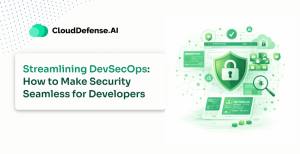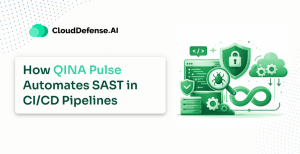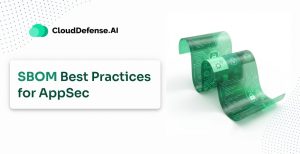The DevOps lifecycle is complex, demanding effective and adaptable tools to simplify processes. Open-source solutions stand out for their flexibility, enabling teams to modify code, integrate custom functionalities, and craft workflows tailored to specific project goals.
Unlike proprietary options, open-source DevOps tools empower teams with scalability and future-proof adaptability, ensuring they stay relevant in the tech industry. These tools provide full control while enhancing productivity, making them invaluable for building, deploying, and monitoring applications.
This article highlights 15 of the best open-source DevOps tools designed to redefine efficiency and stability in your development process. Discover how these tools can transform your DevOps journey and help you overcome complexity with confidence.
15 Best Open Source DevOps Tools for 2025
Naturally, the best DevOps tools for you depend on your unique needs and what your team already has in their kits. Keep in mind that each tool has a specific purpose, but many of these tools can also be combined together for fantastic results.
Tool #1: Jenkins
Jenkins is a powerhouse in the DevOps ecosystem, often considered the best open-source tool for Continuous Integration and Continuous Delivery (CI/CD). Its ability to integrate seamlessly with over 1000 plug-ins makes it the backbone of many DevOps pipelines. By connecting other tools to Jenkins, teams can create an automated and efficient ecosystem for their software development lifecycle.
Jenkins simplifies processes even for smaller teams, enabling them to achieve large-scale delivery goals. It boasts a lightweight installation process and an intuitive web-based configuration interface. With its robust automation capabilities and user-friendly design, Jenkins is a versatile solution that adapts to the diverse needs of modern DevOps teams.
Tool #2: Docker
Docker revolutionized software deployment by introducing containerization, enabling teams to package applications into isolated “containers” for better security, portability, and scalability. This approach ensures applications run consistently across any environment, regardless of operating system or platform.
Docker is particularly valuable for distributed development and automating post-deployment workflows. It integrates smoothly with tools like Jenkins, allowing teams to automate deployments efficiently. Docker’s portability also makes it a top choice for cloud computing and migration projects. With Docker, teams can streamline their workflows, reduce infrastructure conflicts, and improve development agility.
Tool #3: Git
Git is a cornerstone of modern software development, offering exceptional source code management for teams of all sizes. Its version control capabilities enable seamless collaboration, allowing contributors to create branches, test features, and merge updates efficiently.
Git integrates with hosting services like GitHub and Bitbucket, both of which bring unique benefits. GitHub provides free public repositories, while Bitbucket offers unlimited private repositories for small teams. Additionally, Git’s compatibility with tools like Slack enhances team communication and productivity. Built for Linux, Git is especially beneficial for Linux-based development environments.
Tool #4: Ansible
Ansible simplifies infrastructure automation with its configuration management and deployment capabilities. Known for its ease of use and agentless architecture, Ansible eliminates the need for background processes, making it a lightweight and secure option for DevOps teams.
Ansible’s modular structure supports extensive customization, making it easy to integrate into existing pipelines. For example, you can deploy Ansible code within a Jenkins pipeline to automate complex workflows effortlessly. Its intuitive design and robust functionality make Ansible an excellent choice for managing infrastructure and automating repetitive tasks.
Tool #5: Nagios
Nagios is a comprehensive monitoring tool that excels at tracking infrastructure health and performance. It offers detailed reporting, graphing capabilities, and alert systems to help teams identify and resolve issues quickly.
Nagios provides four distinct modules to address various needs:
- Core for command-line monitoring.
- XI for a user-friendly GUI and monitoring wizards.
- Log Server for log data tracking and alerting.
- Fusion for monitoring multiple networks simultaneously.
While it has a learning curve, Nagios is indispensable for large pipelines with complex monitoring needs. Its robust community ensures access to numerous free plug-ins for extended functionality.
Tool #6: Monit
Monit is a straightforward tool designed to ensure that specific processes on a machine run smoothly. If a service like Apache fails, Monit can automatically restart the process, reducing manual intervention.
Monit is ideal for microservices and multiservice architectures, as it keeps detailed logs and records, helping teams analyze and address issues effectively. Its simplicity and reliability make it an excellent choice for teams seeking streamlined monitoring at the end of their DevOps lifecycle.
Tool #7: Terraform
Terraform excels at managing infrastructure as code, enabling teams to configure resources like load balancers, EC2 instances, and networks with ease. Its declarative language supports various platforms, including AWS, Azure, and Google Cloud, making it a versatile tool for multi-cloud environments.
With Terraform, you can modify infrastructure without disrupting existing systems, ensuring a smooth deployment process. It integrates well with other tools like Jenkins, offering a unified approach to managing infrastructure changes and scaling DevOps pipelines efficiently.
Tool #8: Chef
Chef simplifies infrastructure management by offering a unified platform for both cloud-based and on-premises environments. This versatility makes it ideal for teams transitioning to the cloud or managing hybrid systems.
Chef provides a comprehensive development kit for building, testing, and deploying infrastructure automation code. Its robust testing tools and extensive documentation empower teams to scale their DevOps pipelines confidently. By reducing tool-switching and learning curves, Chef enhances productivity and accelerates cloud migration efforts.
Tool #9: Consul.io
Consul.io is a specialized tool designed for microservice applications, focusing on service discovery and configuration. It simplifies network management by creating internal DNS names for microservices, streamlining access across complex systems.
Consul.io is particularly valuable for organizing and clustering services in large networks. While it doesn’t offer broad functionality like other tools, its niche capabilities make it indispensable for teams managing extensive microservice architectures. Its ease of use and targeted features ensure efficient service management in DevOps pipelines.
Tool #10: Prometheus
Prometheus is a robust monitoring and alerting toolkit designed for modern DevOps workflows. It collects real-time metrics and stores them in a time-series database, making it an excellent choice for identifying system performance trends.
Key Features:
- Multi-dimensional data collection with labels.
- Built-in alerting powered by Alertmanager.
- Easy integration with visualization tools like Grafana.
Prometheus is ideal for monitoring containerized environments and microservices due to its scalability and seamless integration with Kubernetes.
Tool #11: Kubernetes
Kubernetes, often referred to as K8s, is the leading container orchestration platform. It automates deployment, scaling, and management of containerized applications, ensuring efficiency and resilience.
Key Features:
- Automated scaling and load balancing.
- Self-healing capabilities (e.g., restarting failed containers).
- Supports hybrid and multi-cloud environments.
Kubernetes is perfect for managing complex microservices architectures, allowing teams to focus on development while ensuring robust application deployment.
Tool #12: Spinnaker
Spinnaker is a continuous delivery (CD) platform built for multi-cloud environments. Developed by Netflix, it integrates smoothly with cloud providers and container orchestration tools like Kubernetes.
Key Features:
- Advanced deployment strategies, including blue/green and canary releases.
- Built-in monitoring and rollbacks for safer deployments.
- Multi-cloud support (AWS, GCP, Azure, etc.).
Spinnaker empowers teams to deliver applications faster and more reliably while minimizing downtime.
Tool #13: ELK Stack (Elasticsearch, Logstash, and Kibana)
The ELK Stack is a suite of tools designed for log management and analytics, enabling teams to monitor and troubleshoot applications efficiently.
Key Features:
- Elasticsearch: Scalable search and analytics engine.
- Logstash: Centralized log aggregation and processing.
- Kibana: Powerful visualization and dashboarding tool.
ELK Stack is ideal for understanding system behavior, diagnosing issues, and improving operational insights in real time.
Tool #14: ArgoCD
ArgoCD is a declarative, GitOps-based continuous delivery tool for Kubernetes. It simplifies managing application deployments in Kubernetes clusters.
Key Features:
- Native Kubernetes support with declarative configurations.
- Automated sync between Git repositories and cluster states.
- Visual interface for managing deployments and rollbacks.
ArgoCD is especially useful for teams adopting GitOps workflows to manage Kubernetes deployments smoothly.
Tool #15: HashiCorp Vault
Vault is a powerful tool for secrets management and protecting sensitive data like tokens, passwords, and certificates. It provides a secure way to store and control access to these secrets across your infrastructure.
Key Features:
- Centralized secrets management with encryption.
- Dynamic secrets generation for temporary credentials.
- Policy-based access control for fine-grained permissions.
Vault ensures your DevOps workflows are both secure and compliant, making it an essential addition to any pipeline.
What is DevOps?
DevOps combines Development and Operations into a unified approach, streamlining the entire software lifecycle from development to deployment and maintenance.
By promoting collaboration between teams, DevOps accelerates delivery, improves agility, and ensures seamless updates and repairs.
This methodology aligns with evolving business goals and industry demands, enabling quicker rollouts and more responsive system improvements.
Ultimately, DevOps enhances efficiency and adaptability, making it a cornerstone for modern software development and operations.
Creating More Targeted Software With DevOps
It’s easiest to think of DevOps as a technique or practice for developing software. When using a “DevOps” approach, you’ll create better, more targeted software or applications and produce better results for your client or enterprise.
To actually engage in DevOps practices, you need special tools that allow you to develop, alter, repair, maintain, or update systems and software rapidly and accurately. There are plenty of open source tools for DevOps available.
“Open source” means that the core code of the tool or software in question is available for analysis or modification – skilled programmers and developers can exploit this to alter open source DevOps tools to better suit their unique needs.
Companies and enterprises are investing more into DevOps tools in this day and age since applications and software more often need to be modified or updated throughout their entire lifecycle.
Having the tools to get this done yourself or within your own team means you don’t have to hire outside contractors and can complete any DevOps modifications or development requirements more quickly.
DevOps Lifecycle
The DevOps lifecycle can be broken down into five distinct stages. With a full DevOps routine or workflow, you’ll be performing all five of these stages relatively simultaneously or continuously.
With DevOps, there’s no real “end” to work, since you’re constantly updating and improving a system or application for better performance.
The stages are:
Development
This includes coding or making the software in question. Planning is also included in this stage, and code can be written in any language depending on your needs or team’s skills. There are plenty of DevOps tools that help with coding.
Testing
This phase involves testing any developed software for bugs. DevOps tools for quality assurance and other testing needs are common for this phase.
Integration
During integration, your DevOps team will implement changes to a system or application’s source code on a daily or weekly basis. This is the core piece of the entire DevOps lifecycle, and there are plenty of DevOps tools for this.
Deployment
During this phase, your team will roll out the system or software to be deployed with your greater enterprise/network. At the same time, your DevOps team will be building, testing, and implementing new code or aspects of the software to improve its functionality.
Monitoring
This is the last phase of the DevOps lifecycle and involves checking the new software or system for any issues and correcting problems as they arise. Once a problem is detected, the DevOps team goes back to the beginning of the cycle to develop new solutions or alterations.
The DevOps cycle continues until you and your team are satisfied with the quality of the product or application in question. In many cases, it will never cease so you’re always seeking greater performance.
Which of These Open Source DevOps Tools Are Right for You?
Ultimately, any of these tools might be a great fit for your development team or enterprise. We’d wholeheartedly recommend all of them, especially since most of them can integrate quite nicely with each other.
Give them each a shot and you’ll find that your development lifecycle is faster and more efficient than ever before.







